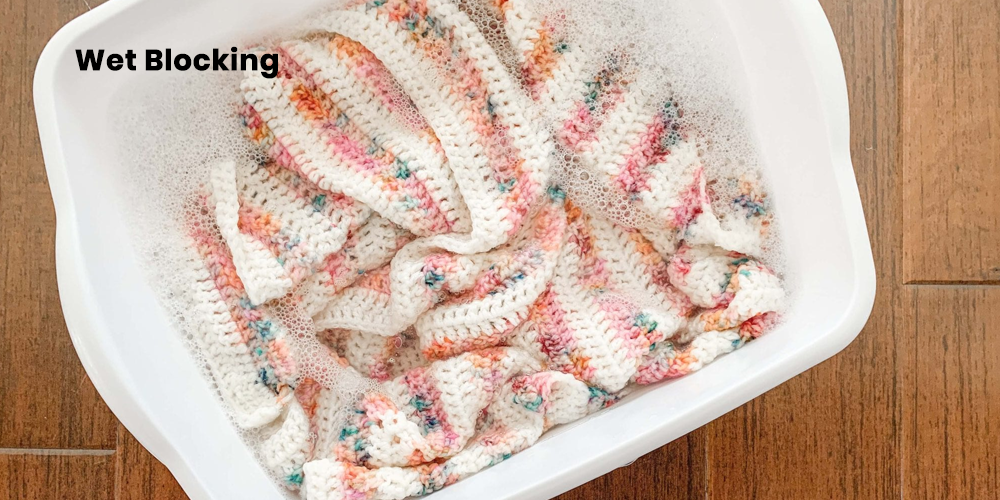
Blocking: What’s It All About and Why Is It Important?
Do not be scared of the gigantic term called ‘Blocking’. It is a common procedure that is followed by many knitters. You might not have known it yet but practiced blocking during many of your projects. On the other hand, some of you must have heard the term ‘blocking’ but not understood your way around it.
No problem, we are here to solve all your issues.
What is blocking?
It is essentially a method of ‘closing off’ a hand knitted piece to give it a complete look. The process involves stretching and shaping a finished piece of knitted craft according to the dimensions suggested in the pattern. Sometimes, blocking is also done to make two identical pieces that need to be put together to match the exact size. Blocking will also make your stitches look nicer and evened out. It can come in handy, especially to novice knitters.
There are three different methods of blocking. They include wet blocking, steam blocking and spray blocking. Let us explore in detail what these subcategories of blocking are.
Wet Blocking
Wet blocking, like the name suggests uses water to aid in blocking. To ‘wet block’ your craft, first dampen the knitted article such that it is only wet but not dripping. Spread the piece on a clear even surface. Select a clean surface such that you can pry a safety pin or a straight pin into the surface. For example, a thick sheet of cardboard, foam sheet, or wood will make for great options.

After you spread your knitted piece, gently stretch it to meet your requirements. Use a measuring scale if necessary. Once you are satisfied with the manipulation, go ahead and gently attach your piece to the sheet by using safety pins or straight pins. Attach it such that it is held in shape firmly against the sheet. Let it dry and as the piece dries it will retain the shape that you gave it.
Note that some fabrics fall apart when wet. Read the label of your yarn properly before you begin wet blocking.
Steam Blocking
Like you guessed, steam blocking uses steam instead of water. This is an alternative to wet blocking since not all fabrics are water-friendly. It is great for fabrics that lose shape when wet, for example, cotton.
Similar to wet blocking, you will need a sheet like thick cardboard, foam sheet or wood that can be used to hold your piece firmly. Steam blocking can be done in two methods. If your piece can be stretched easily, you can start with directly attaching your piece to the sheet by using safety pins or straight pins. After you attach your piece to the sheet in your desired shape, use a handheld steamer to allow the fibers to soak the moisture. Then, let it dry. Your garment should be ready in its new shape.

If your knitted piece is too delicate, start steaming first till all the fibers have soaked up the steam well. Then, simply pin your piece to the sheet.
You can also take the help of a different cloth to carry out steam blocking. First, slightly dampen a clean cloth that is either slightly bigger or approximately the size of your knitted fabric. Then place it over your knitted piece and slightly iron while it is attached to the sheet. Remember that you cannot press too tightly. The motive here is to transfer the steam from the wet cloth into the fibers of your knitted piece.
You can also do this without a different cloth. Just set your iron into steam mode and gently run it over your knitted piece while attached to the sheet. Remember not to press too hard.
Spray Blocking
Now you must have already guessed what is spray blocking. This is a method that is more delicate than wet blocking or steam blocking. For this method, just pin your knitted piece to the sheet in your desired shape and gently spray water with a spray bottle. Remember to get it damp only to relax the fibers and not too wet like in the methods mentioned above.

Spray blocking is most ideal for delicate and expensive fabrics like wool, cashmere, silk, etc. It is gentle and will not spoil your fibers. If you are unsure about what kind of fabric you are dealing with, stick to spray blocking.
Conclusion
You can also purchase blocking boards that are made specifically for this purpose. If you are afraid of using safety pins or straight pins, we recommend you to use T-Pins to help pin your garments. Overall, blocking is a process that will do much justice to your hard work. A good-looking garment will definitely improve your look and give you that much needed self-confidence.
We hope that this guide helped you in understanding the process of blocking.
For any queries, reach out to Vardhman Knit World at customercare@vardhman.com or call us on 81466-25292.

